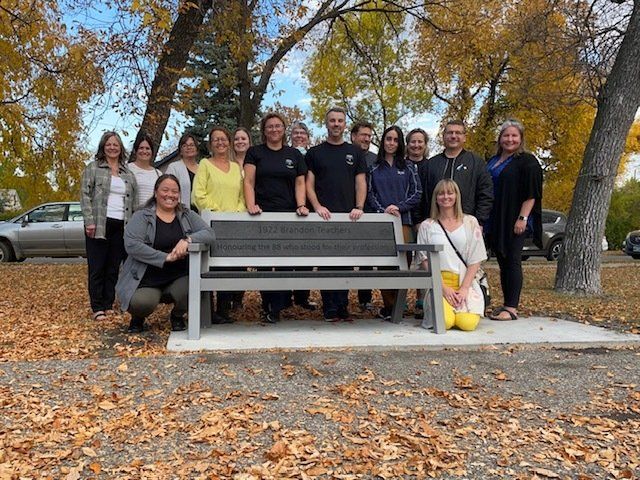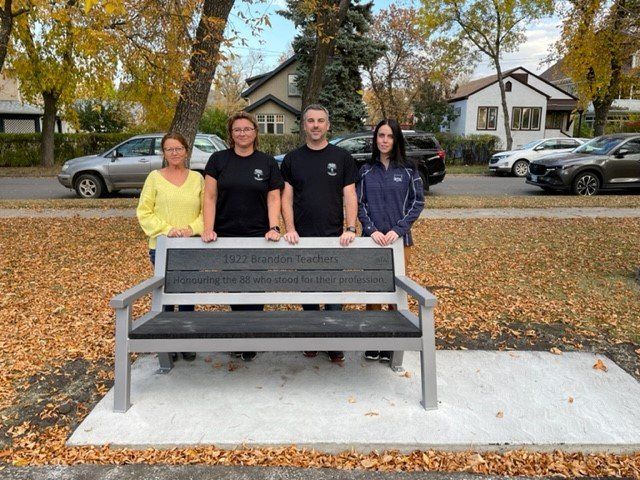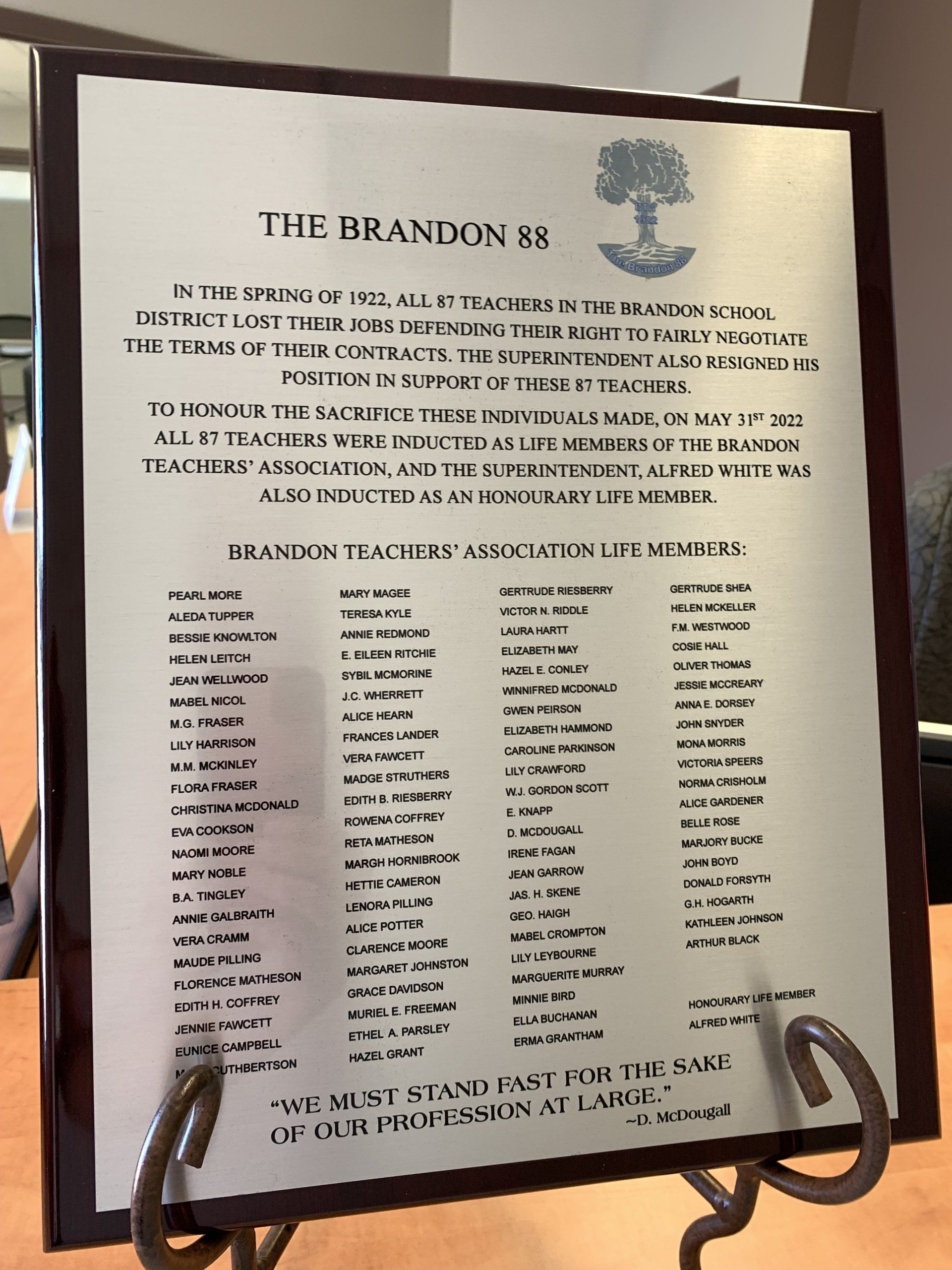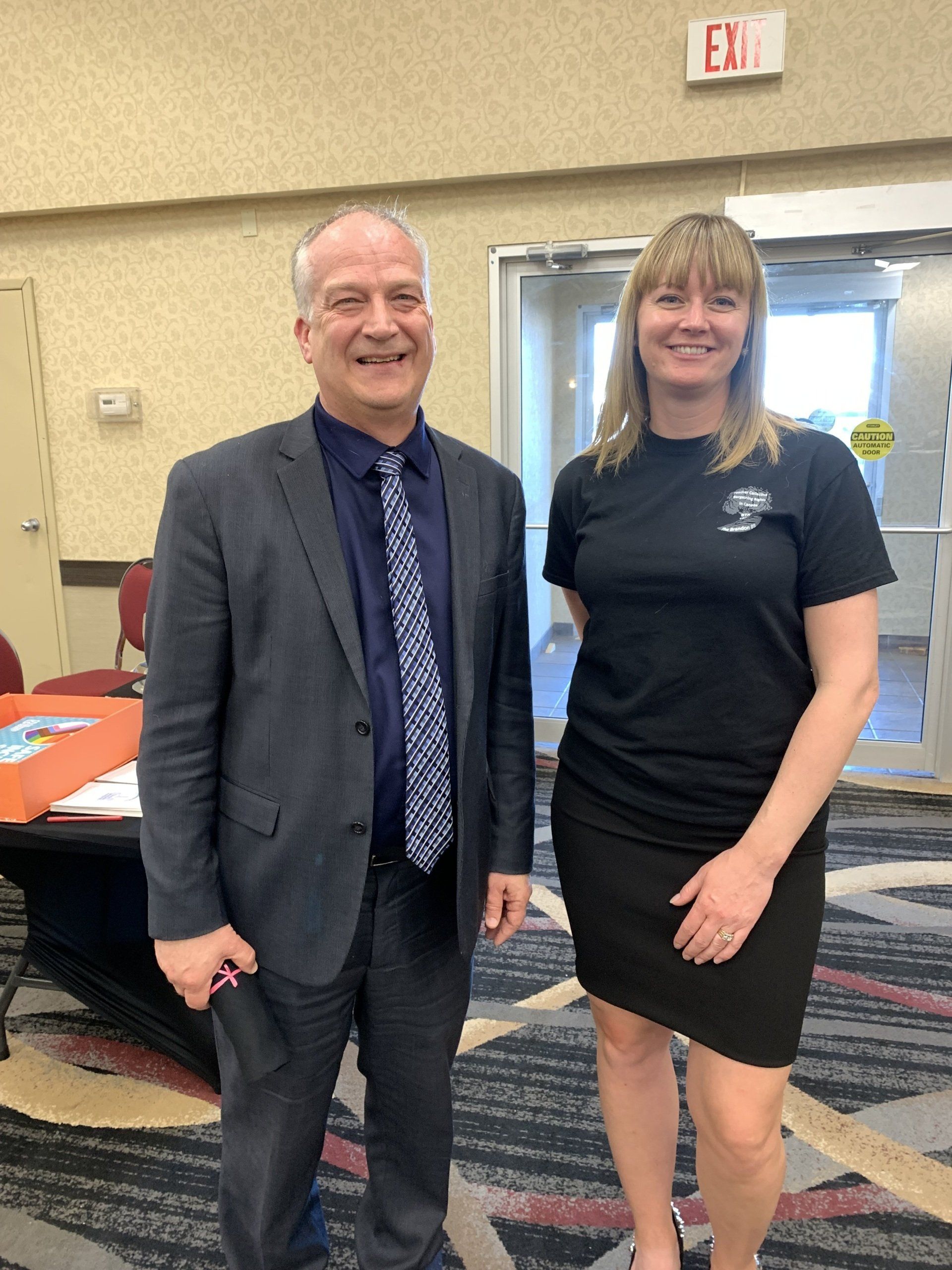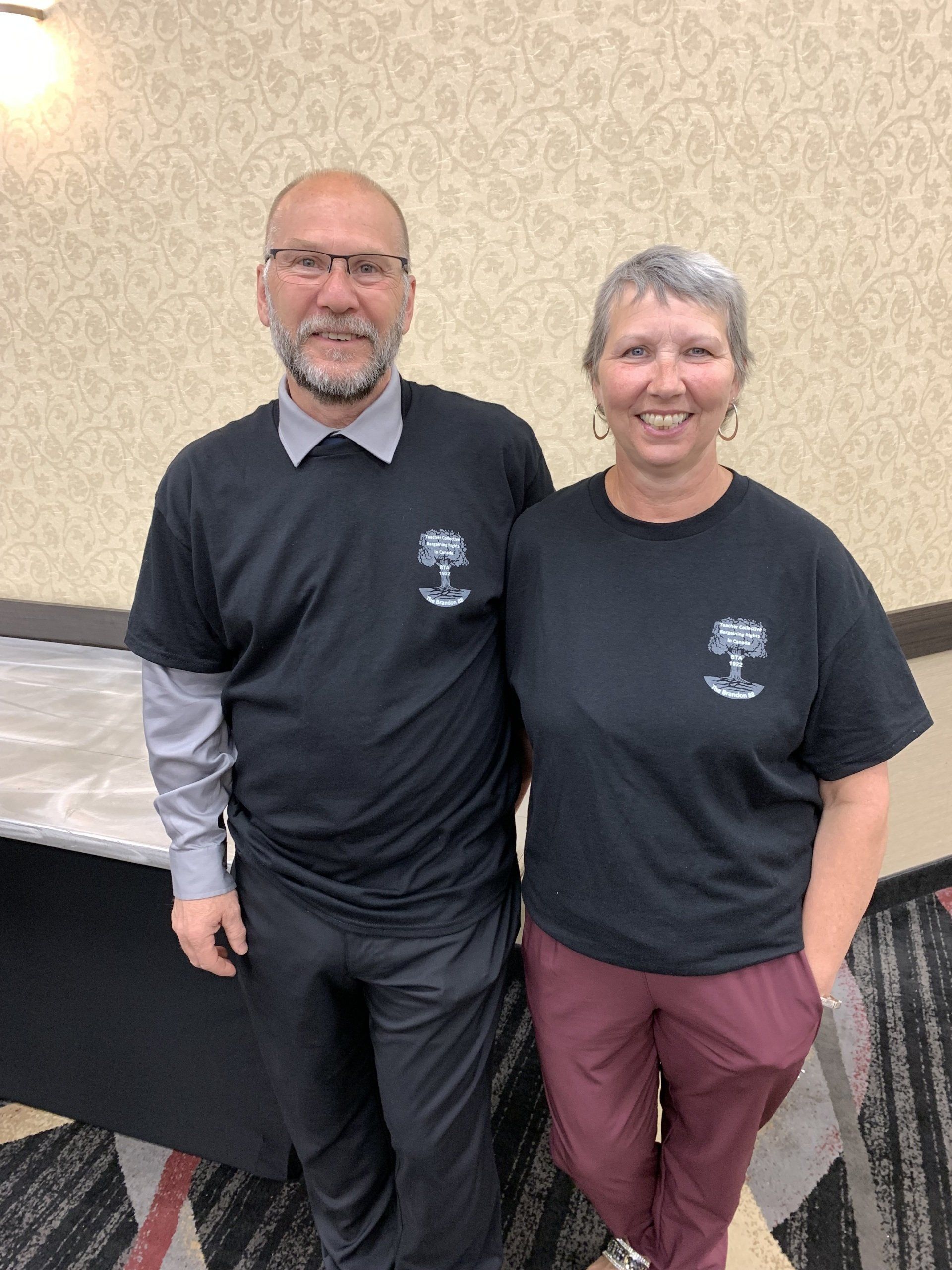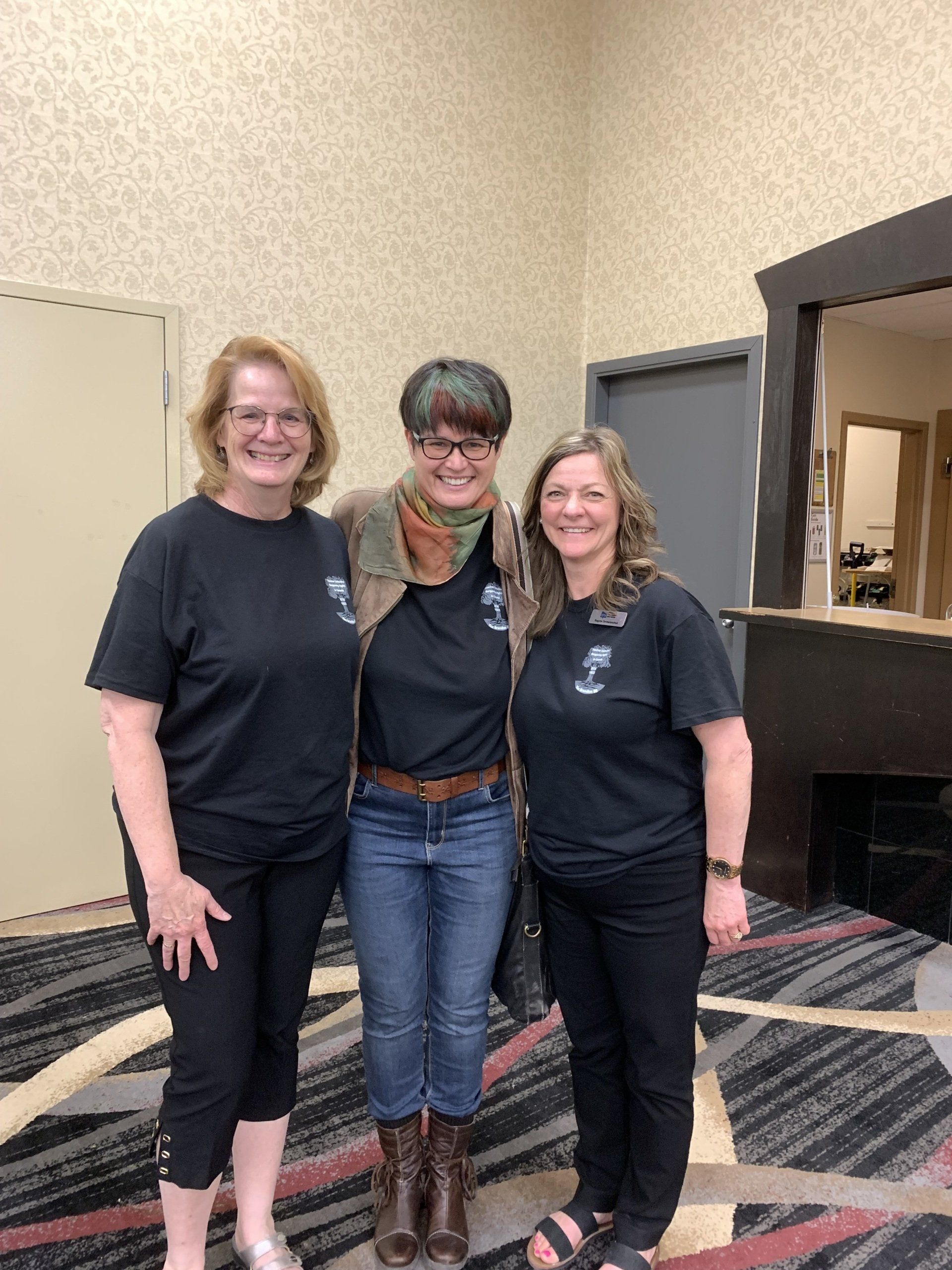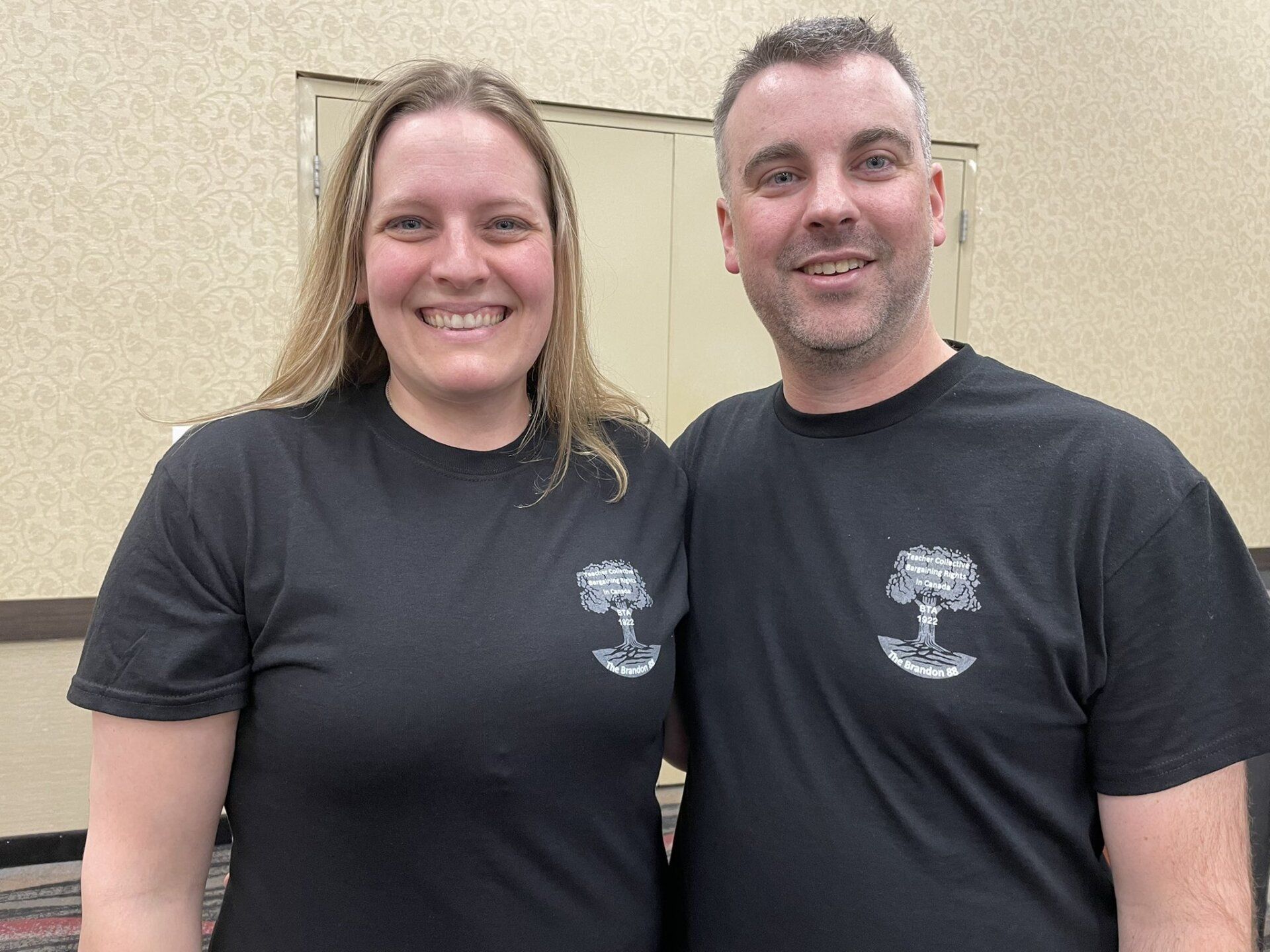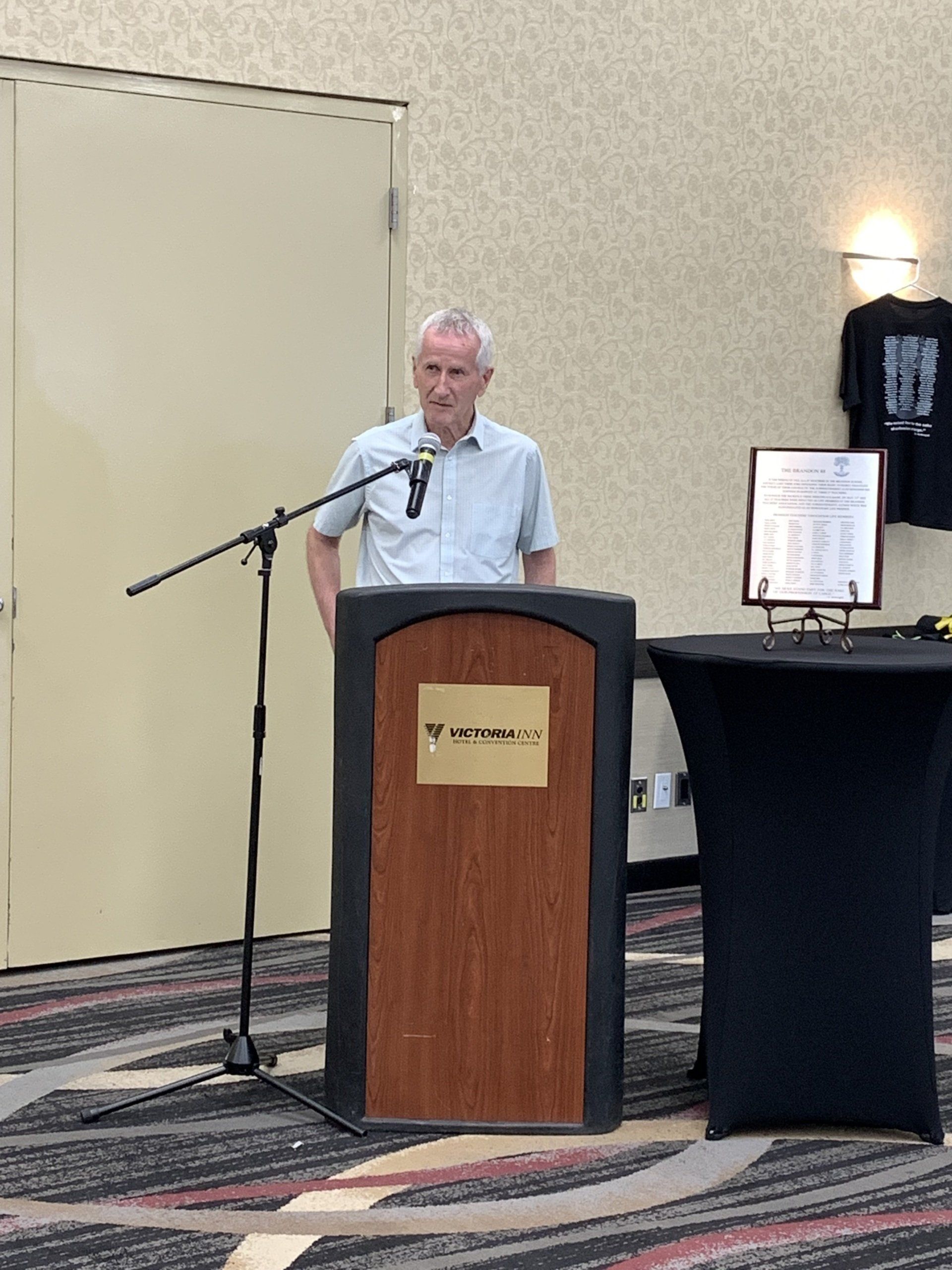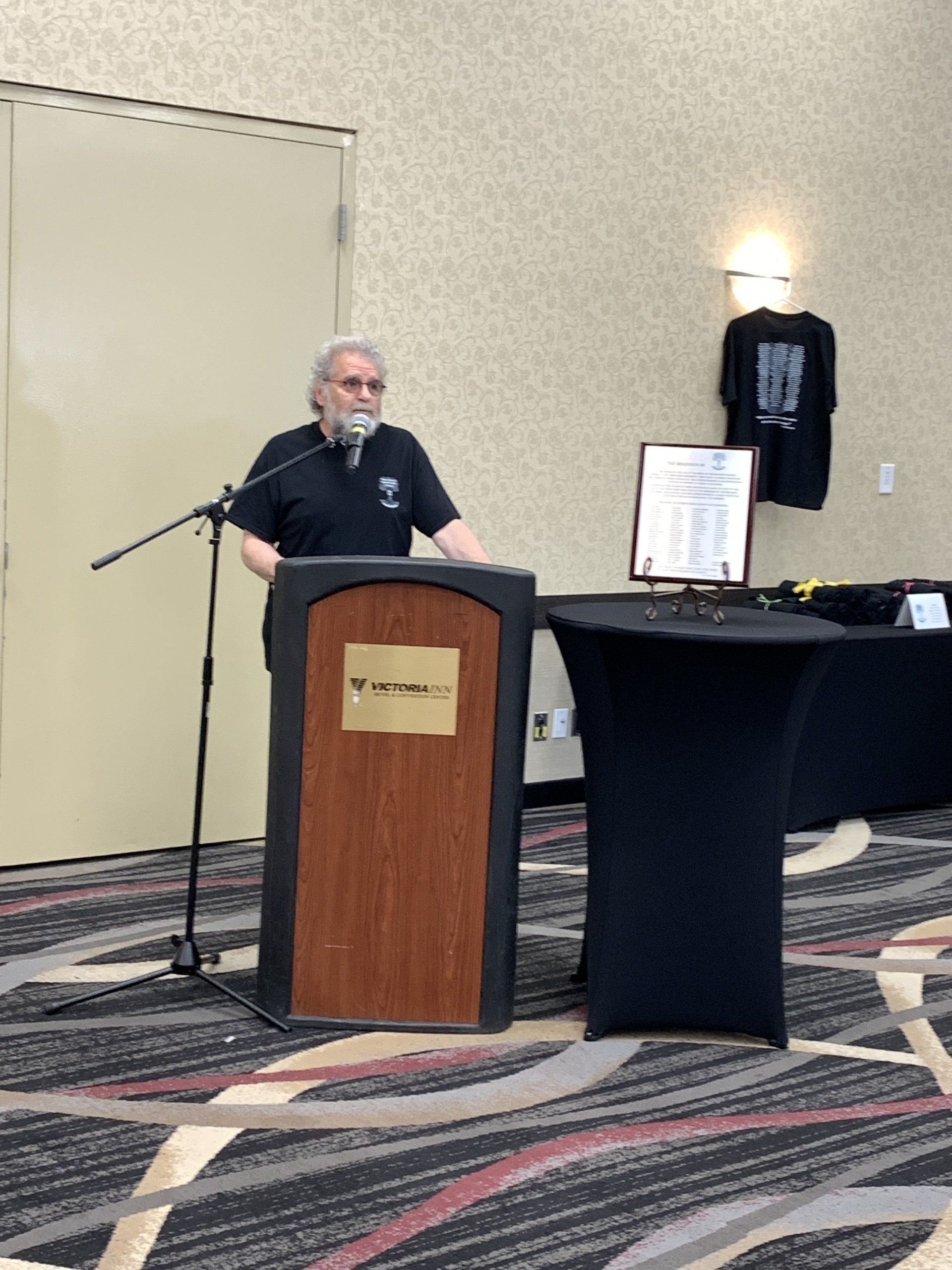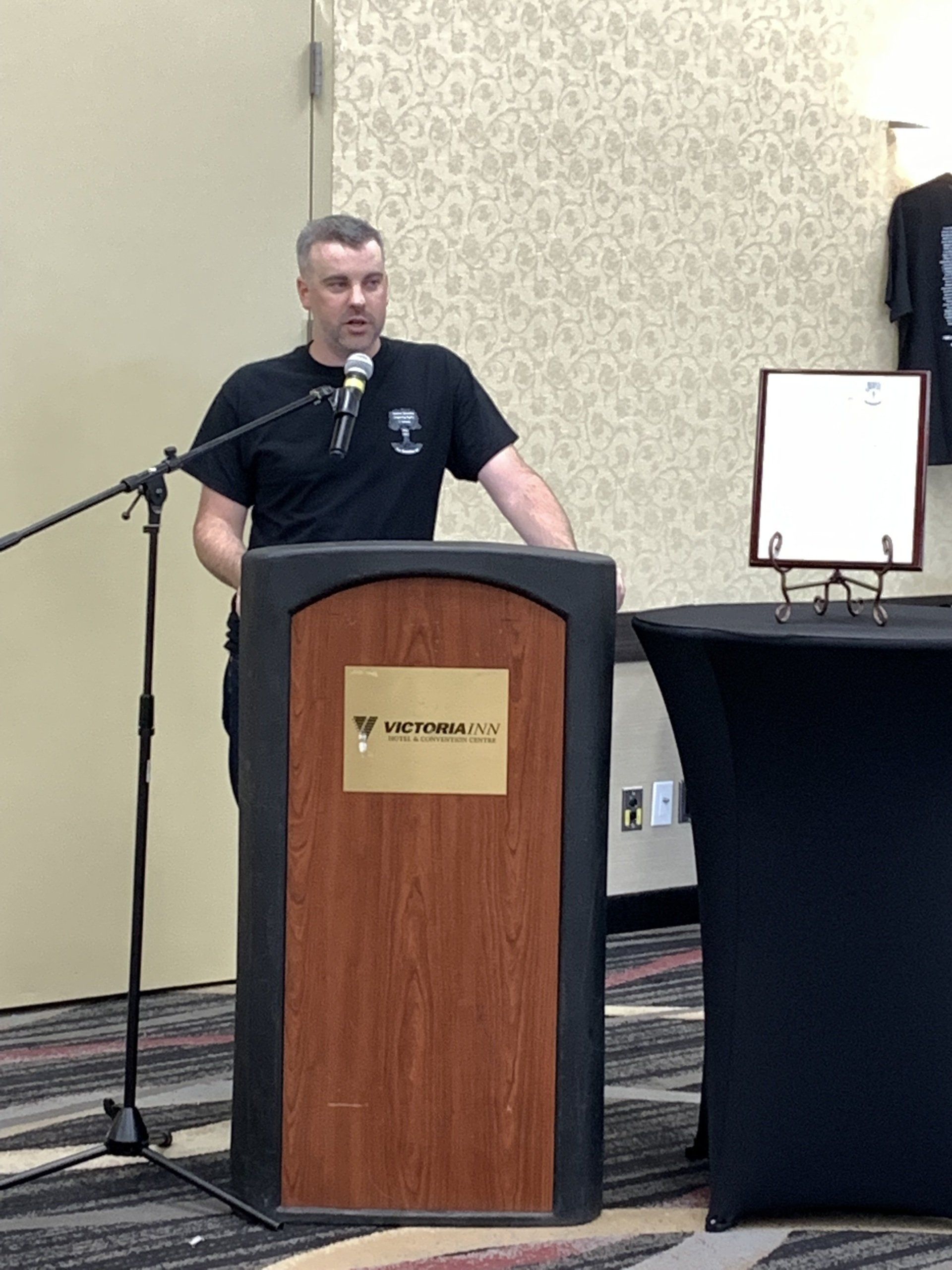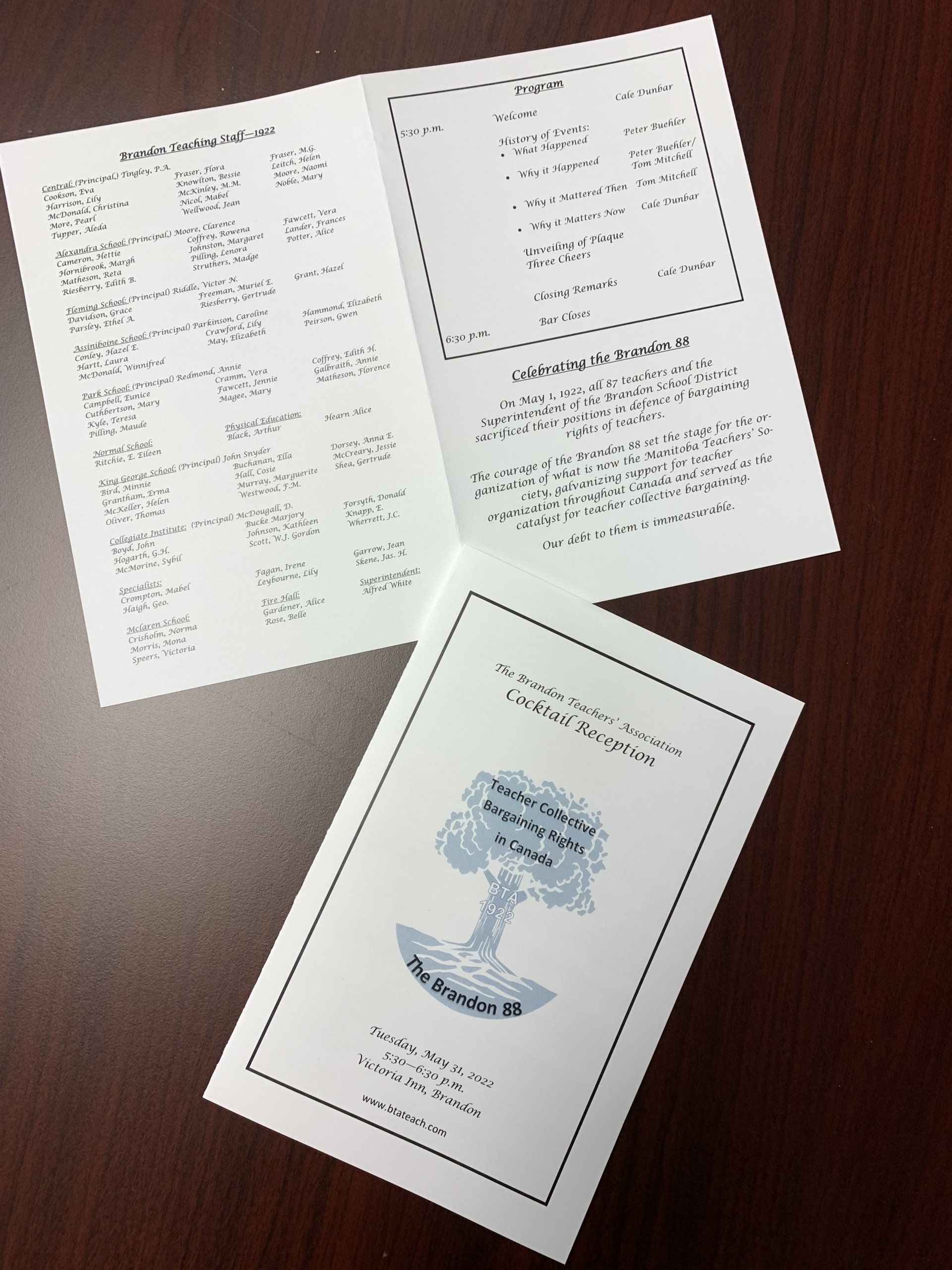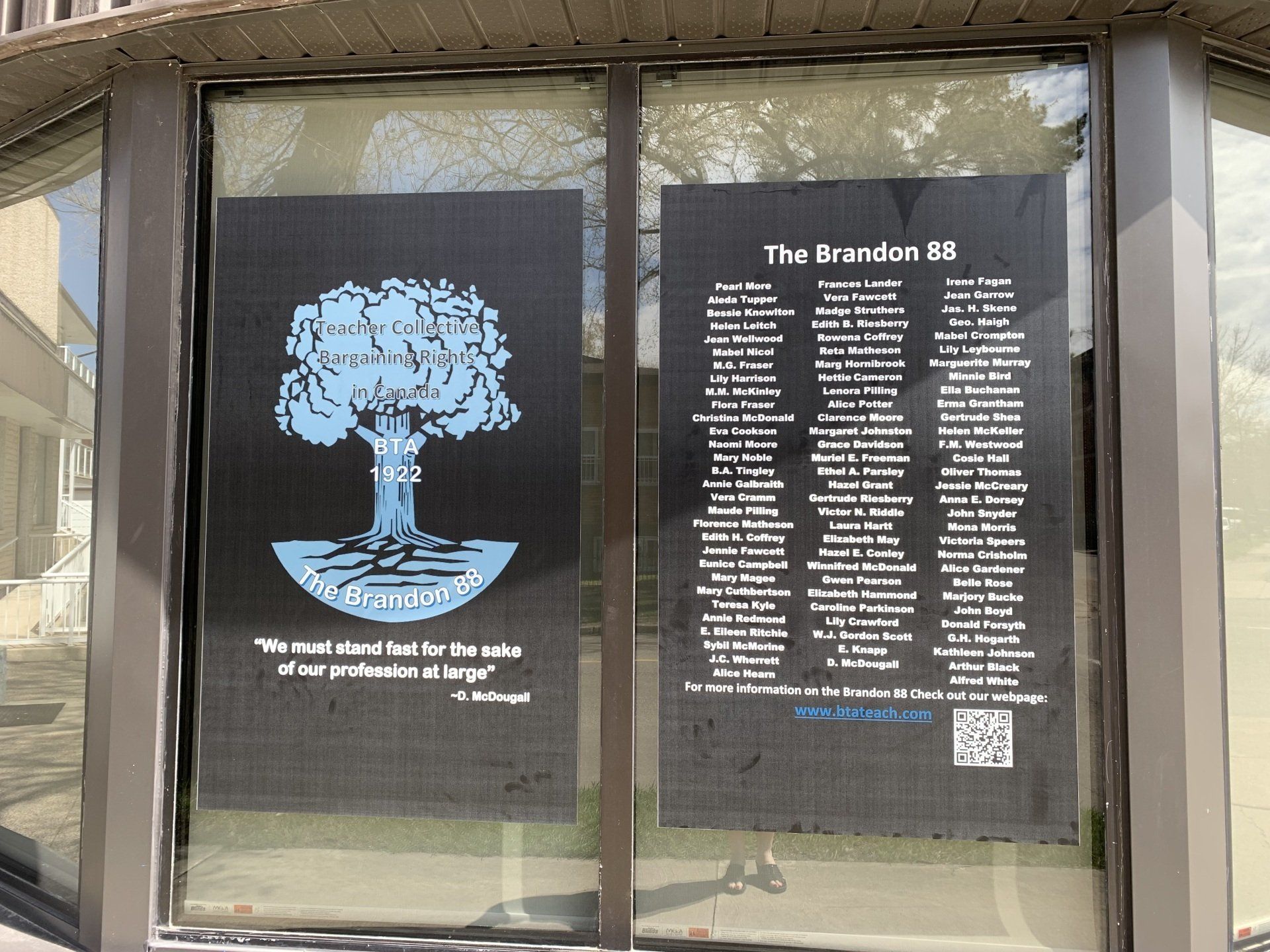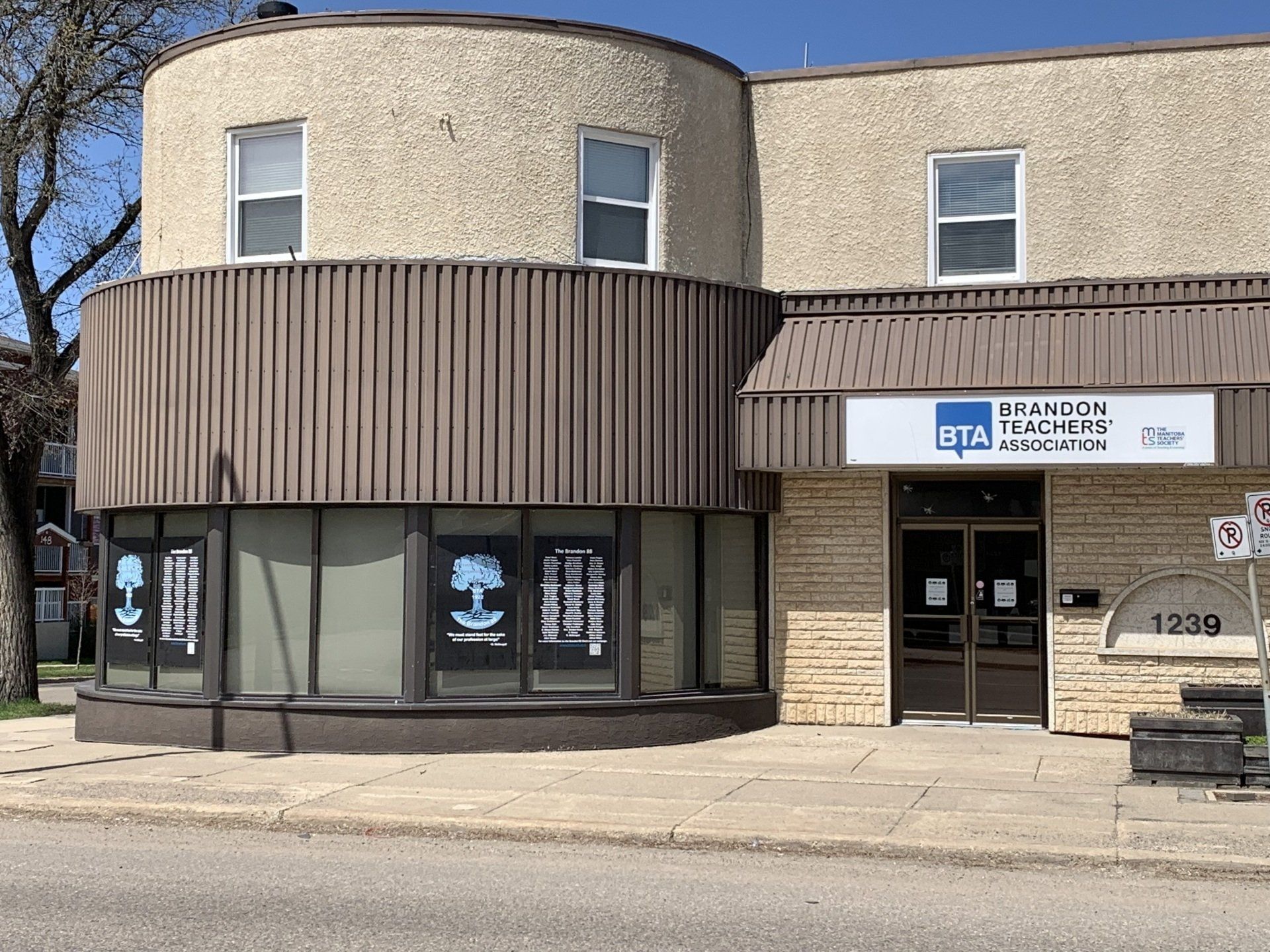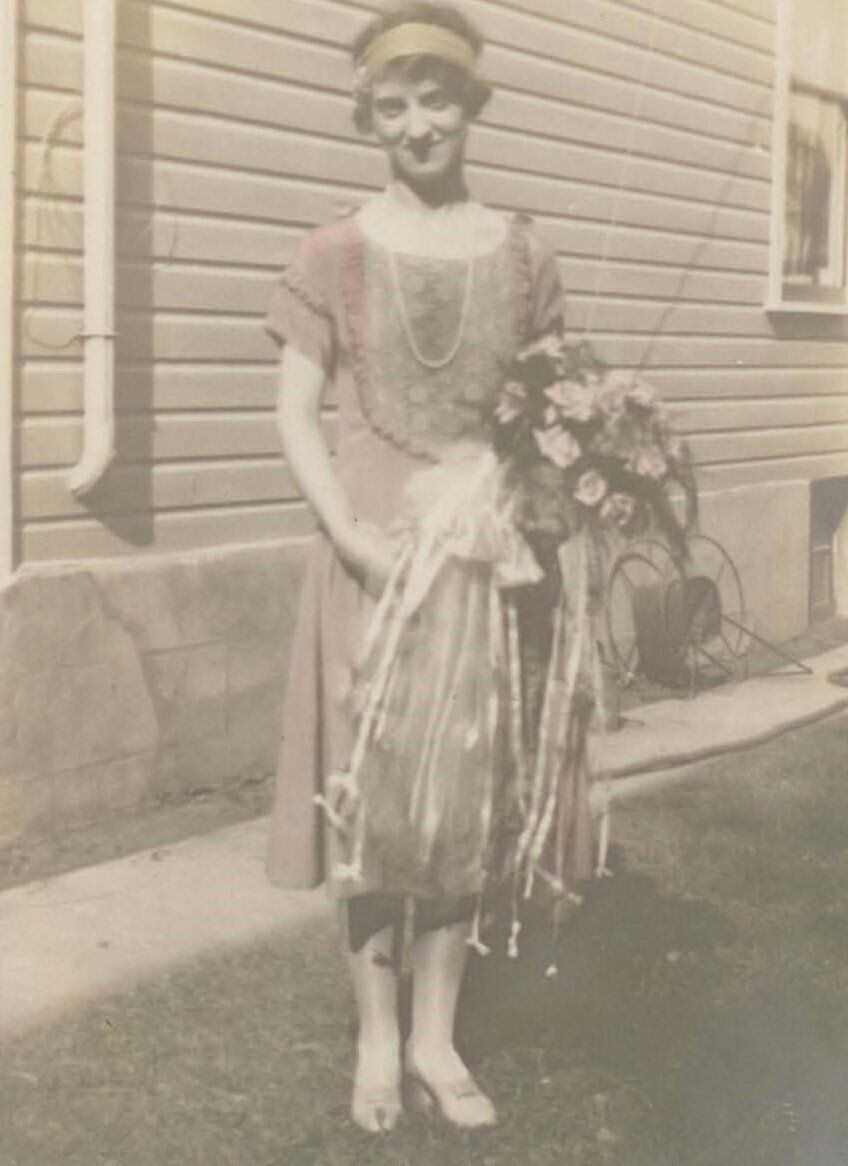
1922 Brandon Ultimatum
Solidarity in Crisis
Brandon 1922: Crisis, Ultimatum, Solidarity and Courage
On Monday, February 27th, 1922, the Brandon School District summoned its eighty-seven teachers to a meeting after school. The chair of the school board told them that because of a shortfall in taxes and a city budget deficit, the board could not afford to maintain teacher salaries at the current level. Therefore, the school board asked every teacher it employed to agree to a 25% reduction in salary. The Board chair told the teachers that failure to agree would lead to the termination of all their contracts on April 30.
At the time, most teachers were paid no more than $1800 a year. About a third were paid $1100 a year. Seventy-three of those teachers were women, all of them working at salaries lower than those of their male colleagues.
Though they were to respond that same day, to gain time to consider the board’s demand, the teachers agreed to waive their right to due notice and met to consider the situation. They concluded that the state of the city finances was not “a sound and proper principle on which to base a reduction in the salaries of teachers.” They felt the work they were doing should be the main consideration in determining their salaries. They believed also that years of service should be a factor in establishing the level of pay. Looking at salaries paid by other school boards, they knew their salaries were not out of line. Every one of them signed a statement, dated March 3, rejecting the board’s demanded salary cut. Brandon School District Superintendent Alfred White signed with them.
The school board responded by sending each teacher a letter dated March 4, terminating her or his contract as of April 30. The school board published newspaper advertisements seeking applicants to fill the teaching positions for May and June, requesting that the applicants state the salary they required.
For the next two months the issue was contested hotly in the city. The teachers received enthusiastic support from their students, trade unions, and many citizens. On the other hand, the Brandon Sun was very much against the teachers, running editorials, news stories and letters accusing the teachers of trade unionism and bolshevism. The Brandon Teachers’ Association bought advertising space and distributed handbills to inform the public of their position. The recently founded Manitoba Teachers’ Federation published advertisements in provincial and national newspapers requesting that teachers not apply for positions in Brandon.
The Brandon Teachers’ Association proposed that a provincially-constituted Board of Reference resolve the matter – a form of arbitration. The school board responded that it did not recognize collectives of teachers, iterating that it hired staff on an individual basis. Board members would not accept that a third party – that is, a Board of Reference – could direct them regarding pay for their employees.
The board tried hard to render the teachers’ association ineffective, attempting to negotiate contracts with individual teachers. The strategy did not work. Not one would do so.
One hundred years ago, on the afternoon of Friday, April 28, eighty-seven Brandon teachers and the school district’s superintendent – the Brandon 88 – left their schools for the last time.
For the BTA members of 1922, the heart of the situation was a question of morality: was it right for teachers alone, eighty-seven people, to carry the cost and remedy the city’s financial difficulties? For those teachers, the answer was “No.” Not one of them gave in to what must have been incredible pressure to surrender and return to work at three-quarters of their income. With remarkable courage, they stood together and left their jobs. They rejected the school board’s ultimatum, protecting their own dignity and that of teachers throughout the country.
The courage of the Brandon 88 set the stage for the full development of the Manitoba Teachers’ Federation, now the Manitoba Teachers’ Society, galvanized support for teacher organizations in western Canada and throughout the country, and catalyzed the advancement of teacher collective bargaining. Our debt to them is immeasurable.
“Teachers across the Dominion are looking at Brandon - their eyes are on us as teacher-colleagues.
If we submit to this unjust ultimatum, they will say, sadly: ‘Brandon, you let us down!’
We must stand fast for the sake of our profession at large.”
– Duncan McDougall, BTA member of 1922
More detailed accounts of these events can be found in:
Mann, Margaret. (1972). The strike that wasn’t. Brandon: Chalk Talk Publishing.
Mitchell, Tom. (1991). “We Must Stand Fast for the Sake of Our Profession”: Teachers, Collective Bargaining and the Brandon Schools Crisis of 1922, Journal of Canadian Studies/Revue d’etudes canadiennes, 26 (1), 82-99.
Members of the Collegiate Institute - 1922
Standing (L to R)
Mr. W.J. Gordon Scott, George Warren (Caretaker),
Mr. John Boyd, Mr. Erwin Knapp,
Mr. Duncan McDougall (Principal), Mr. George Hogarth, Mr. James Wherrett, Mr. Don S. Forsyth, Mr. Jas Skene (specialist)
Sitting (L to R)
Sybil McMorine, Marjory Bucke, Irene Fagan (specialist)
Kathleen Johnson, Mabel Crompton (specialist)
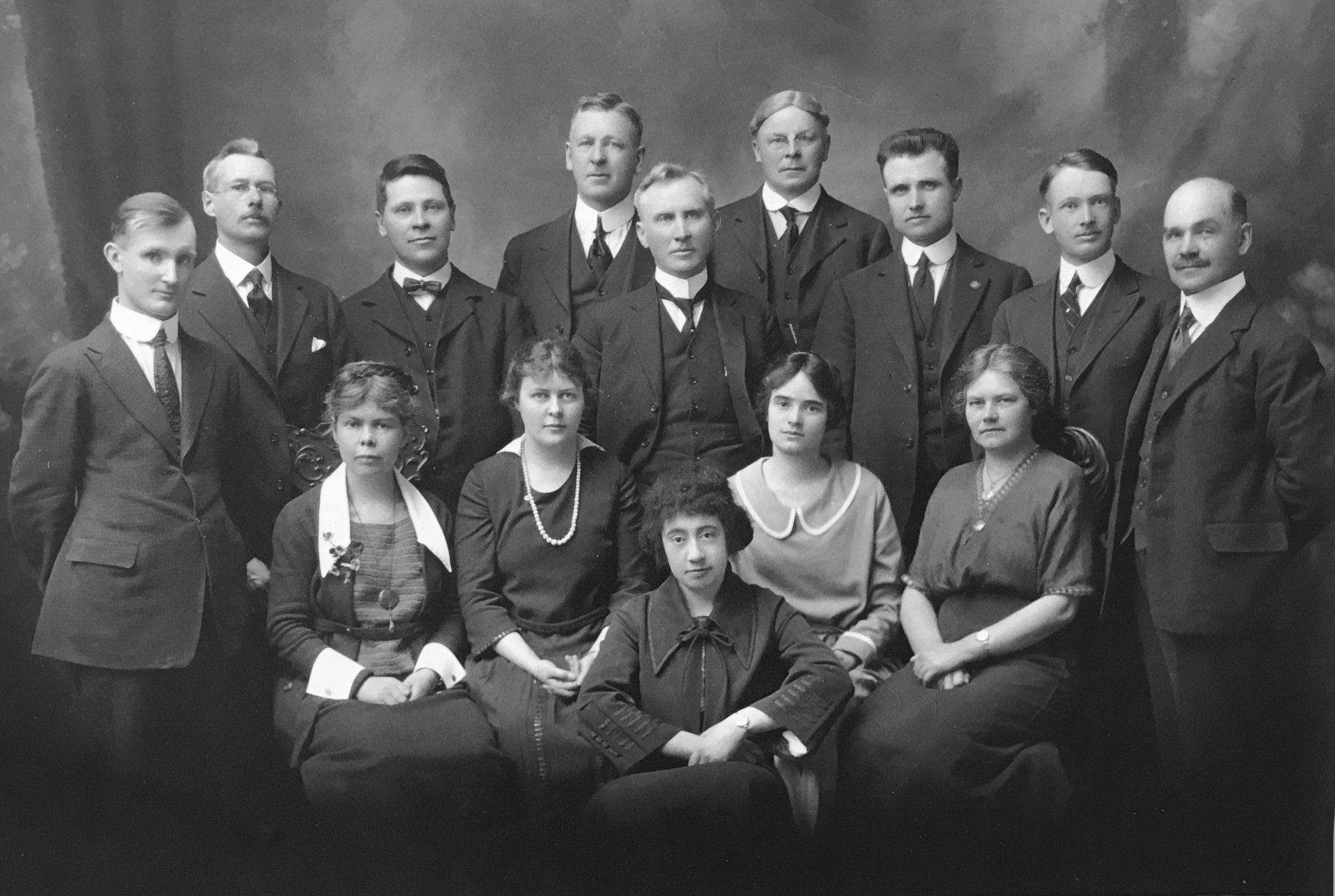
Central School
B.A. Tingley (Principal)
Eva Cookson
Flora Fraser
M.G. Fraser
Lily Harrison
Bessie Knowlton
Helen Leitch
Christina McDonald
M.M. McKinley
Pearl More
Naomi Moore
Mabel Nicol
Mary Noble
Aleda Tupper
Jean Wellwood
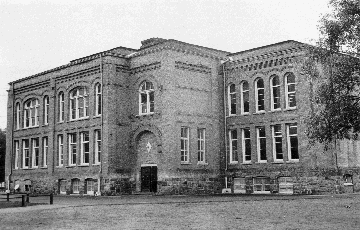
Park School
Annie Redmond (Principal)
Eunice Campbelll
Vera Cramm
Edith H. Coffrey
Mary Cuthbertson
Jennie Fawcett
Annie Galbraith
Teresa Kyle
Mary Magee
Florence Matheson
Maude Pilling
Normal School
E. Eileen Ritchie
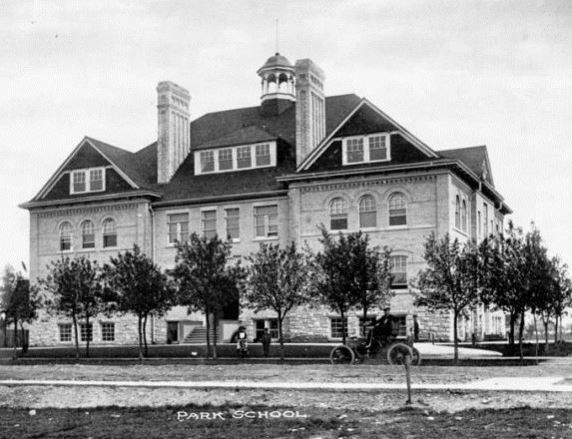
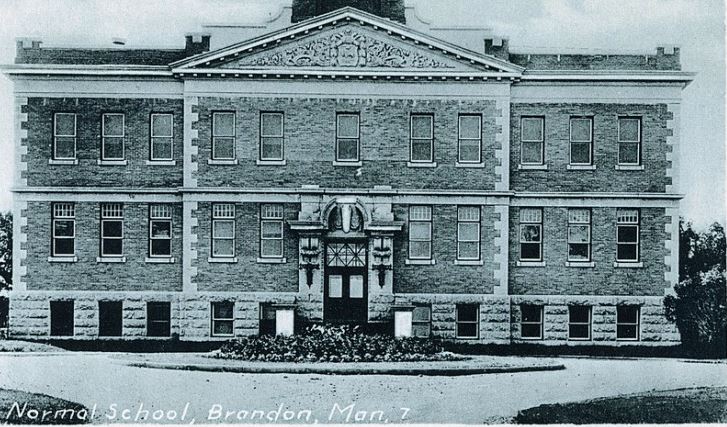
Alexandra School
Clarence Moore (Principal)
Hettie Cameron
Rowena Coffrey
Vera Fawcett
Margh Hornibrook
Margaret Johnston
Frances Lander
Reta Matheson
Lenora Pilling
Alice Potter
Edith B. Riesberry
Madge Struthers
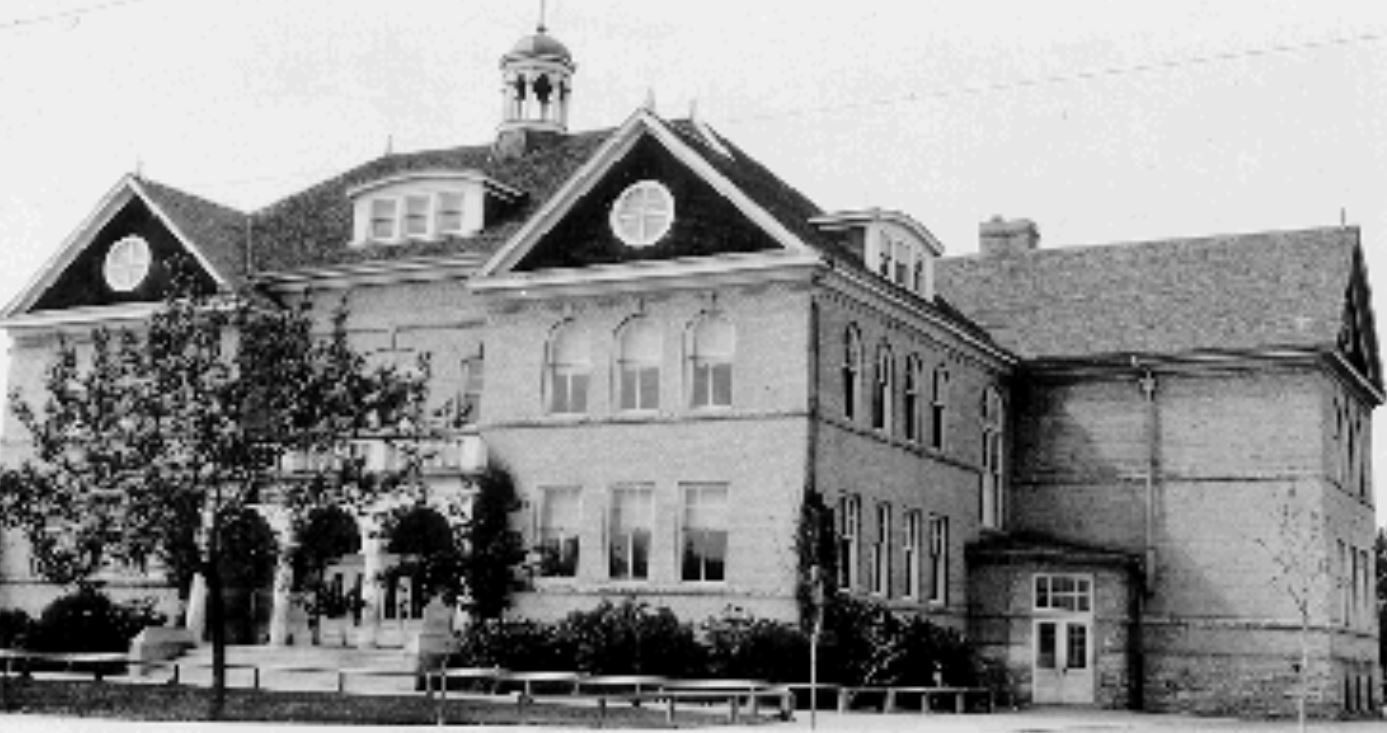
King George School
John Snyder (Principal)
Minnie Bird
Ella Buchanan
Anna E. Dorsey
Erma Grantham
Cosie Hall
Jessie McCreary
Helen McKeller
Marguerite Murray
Gertrude Shea
Oliver Thomas
R.M. Westwood
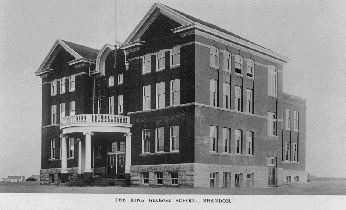
Fleming School
Victoria N. Riddle (Principal)
Grace Davidson
Muriel E. Freeman
Hazel Grant
Ethel A. Parsley
Gertude Riesberry
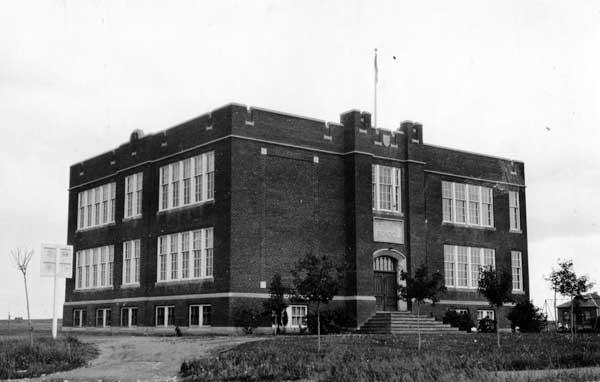
McLaren School
Norma Crisholm
Mona Morris
Victoria Speers
Fire Hall
Alice Gardener
Belle Rose
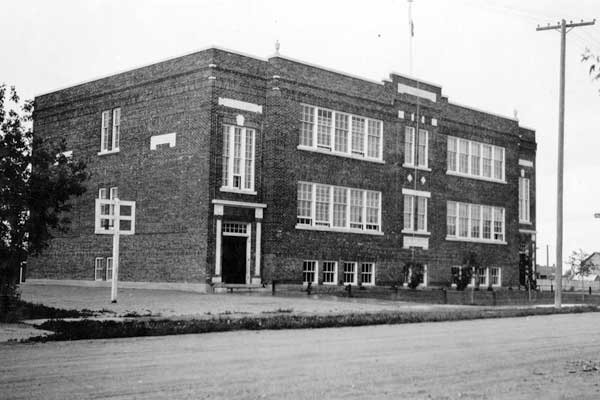
Assiniboine School
Caroline Parkinson (Principal)
Hazel E. Conley
Lily Crawford
Elizabeth Hammond
Laura Hartt
Elizabeth May
Winnifred McDonald
Gwen Peirson (aka Pearson)*
*G Peirson/Pearson name change at request of family.
Caroline Parkinson moved to Winnipeg following the 1922 Ultimatum. She eventually became the first female President of the Manitoba Teachers' Society. (1935-1936)
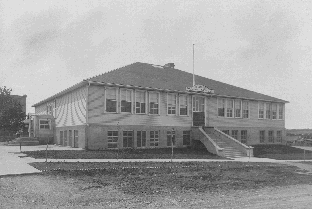
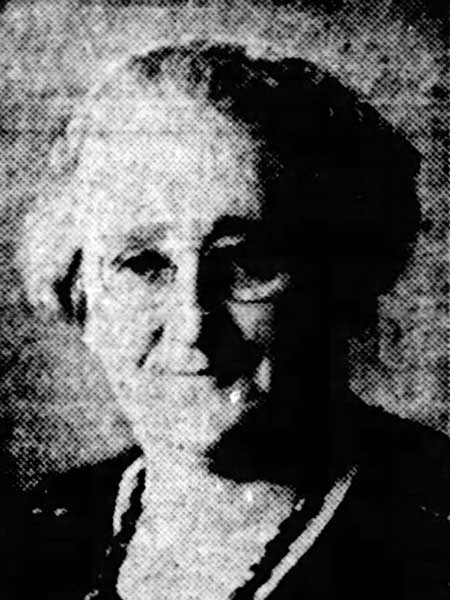
Specialists
Jean Garrow
Geo Haigh
Lily Leybourne
Physical Education
Arthur Black
Alice Hearn
Superintendent
Alfred White


Resources Available to Download
"We must Stand Fast for the Sake of Our Profession" , Teachers, Collective Bargaining and the Brandon School Crisis of 1922 - Tom Mitchell, Brandon University.
Article written for the 75th anniversary - Peter Buehler
"To the Citizens of Brandon" - Statement of the Executive of the Brandon Teachers' Association.
Brandon Teaching Staff and Salaries - 1922
Interview for teaching positions in Brandon, 1929
Mr. Alfred White, Superintendent of the Brandon Public Schools 1908-1922
Article from the Brandon Sun, April 30, 2022 "Remembering the Brandon 88"
To learn more about the events of 1922, please refer to Margaret Mann's book The strike that wasn't: teachers' "strike", Brandon, 1922 (published 1972 and available at the Western Manitoba Regional Library).
How the Brandon Teachers' Association Honoured "The Brandon 88"
In January of 2022, the Association struck an Ad-Hoc Committee to consider how the events of 1922 and the ultimatum faced by the 87 teachers of the Brandon School Division could be recognized and honoured.
The Committee members, Peter Buehler (Chair), Cale Dunbar (BTA President), Thiaya Brazaeau (PR Committee Chair), Lynn Nicol (EMAL) and Eva Eberts (School Administrator) met regularly to review and implement a number of initiatives.
- Informational Article in the March 2022 BTA BUZZ Newsletter written by Peter Buehler.
- Article in the Brandon Sun Newspaper written by Kyle Darbyson and published April 30, 2022.
- A webpage was developed on the BTA website dedicated to providing a digital record of the history and resources surrounding the events of 1922 and the "Brandon 88".
- Window decals were displayed for a period of time on the BTA Office Conference Room windows. The decals listed the names of the "Brandon 88" and provided a QR code linking to the 1922 Brandon Ultimatum webpage.
- A limited number of t-shirts were printed listing the names of the "Brandon 88".
- A 1922 Award for Service to the Teaching Profession was created. A resolution was brought forward to the 2022 MTS Provincial Council to honour the 1922 Brandon School District teachers who stood together in solidarity and to recognize those educators who continue to fight for the sake of their profession. The resolution was passed at the 2022 MTS Provincial Council with the first award to be handed out at the 2023 MTS Provincial Council.
- Life Membership and Honourary Life Membership for the "Brandon 88". At the BTA AGM held May 31, 2022, members of the Association unanimously voted to bestow Life Membership on the 87 teachers of 1922 and Honourary Life Membership to the 1922 Superintendent, Alfred White who resigned from his position in support of the teachers (making them the "Brandon 88"). A plaque was created to recognize the Life and Honourary Life Memberships.
- A reception was held on May 31, 2022, following the BTA AGM to celebrate, educate and recognize the "Brandon 88". Special invited guests from the City of Brandon, School Division, Manitoba Teachers' Society, neighbouring teacher associations, life members of the BTA as well as members of the Brandon Teachers' Association joined in the celebration. Peter Buehler and Tom Mitchell, archivist from the Brandon University, provided historical background outlining the significance of the events of 1922. The BTA President served as MC for the evening. Many in attendance wore the t-shirts created to recognize the "Brandon 88". The plaque created for the Life and Honouray Life membership was unveiled.
- A park bench was installed in Stanley Park honouring the 88 who stood for their profession.

